

Carl Barks was a pioneer in his field in many ways. Not only did he invent numerous characters and objects for use in his comic book stories, but he was also interested in treading new paths with regard to technique and page layout.
The page concentrates on Barks' duck stories from 1942 to 1966. Therefore his numerous stories with Barney Bear and Benny Burro as well as his later Junior Woodchucks stories are not part of the presentation.
| THE CHARACTER GALLERY | |||
| Barks used many recurrent characters in his Disney comics. Some were his own creations, some were taken from the existing Disney universe and developed further by him. And a few he only used once. Here are all the prominent ones' first appearances in chronological order: | |||
| BARKS CHARACTERS Jones, neighbour WDCS038 - 1943 Herbert, neighbourhood kid Scrooge McDuck James, chauffeur Gladstone Gander Junior Woodchucks Beagle Boys Gyro Gearloose Glittering Goldie April, May, June Chickadees Emily Quackfaster,
secretary Flintheart
Glomgold Little Helper General Snozzie,
JW hound John D. Rapfeller Magica de Spell Clerkly,
bookkeeper |
OTHER
CHARACTERS Donald Duck FC0009 - 1942 Huey, Dewey, Louie Black Pete Daisy Duck Bornworthy, Saint
Bernard Mickey Mouse Minnie Mouse Goofy Clarabelle Cow Grandma Duck Santa Claus Gus Goose Gus and Jaq Morty and Ferdie Dumbo Brer Fox Big Bad Wolf Clara Cluck |
||
| THE OBJECT GALLERY | |||
| In his stories Barks used a multitude of different objects (in the broadest sense of the word). Many of them have left a lasting impression on us. Here is a collection in chronological order. (It should be noted that the drawings do not necessarily show the first appearances of the objects.) | |||
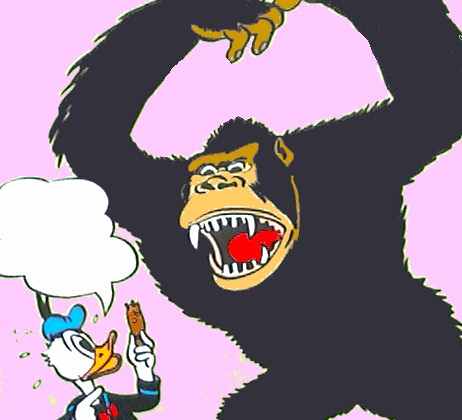 Rabbit's foot WDCS032 - 1943 |
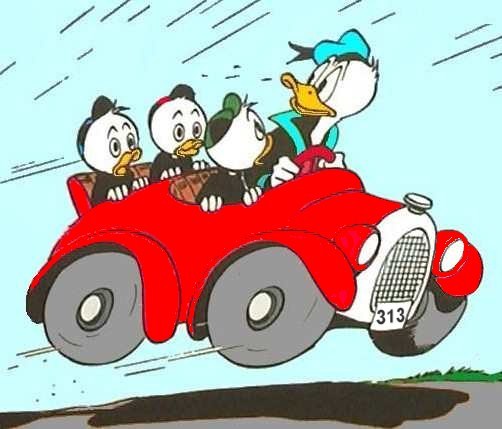 Car 313 WDCS044 - 1944 |
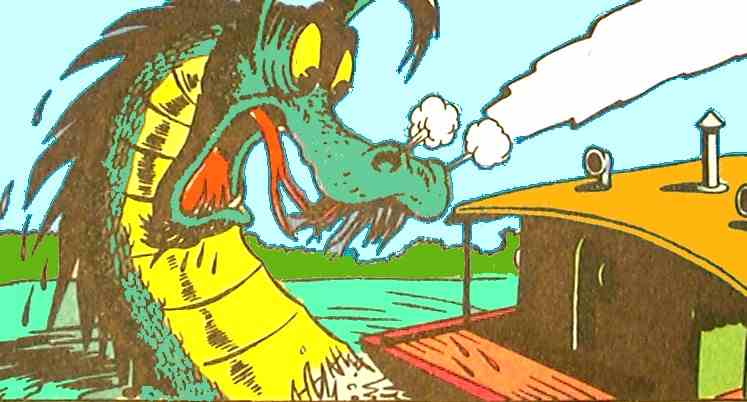 Houseboat FC0108 - 1946 |
|
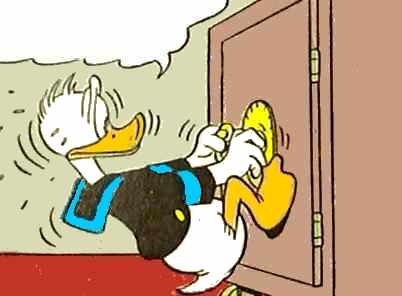 Safe WDCS078 - 1947 |
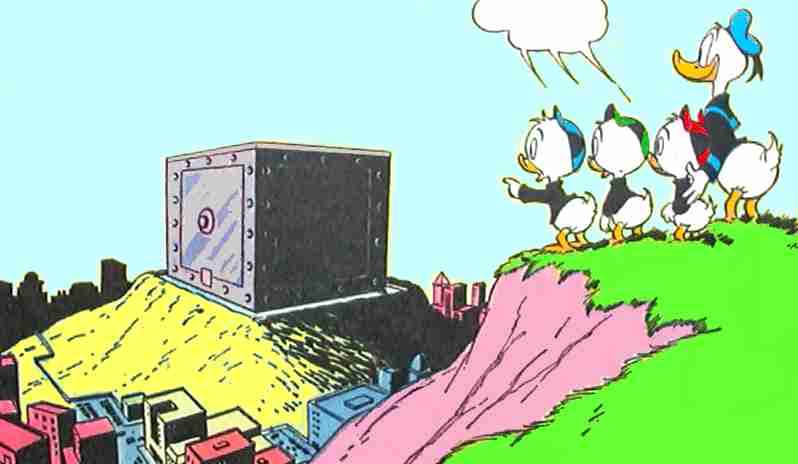 Money Bin FC0282 - 1950 |
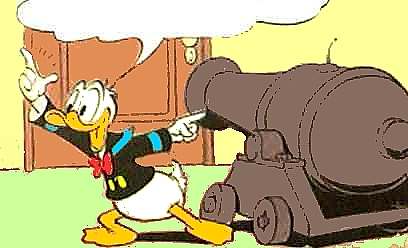 Boer War Cannon WDCS134 - 1951 |
|
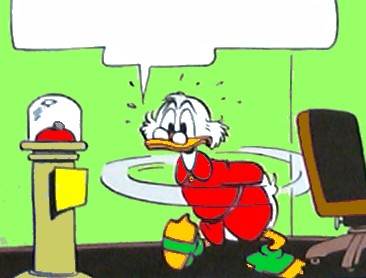 Dime Number One FC0495 - 1953 |
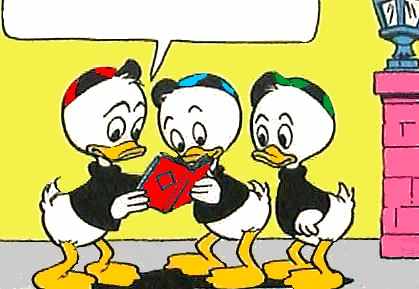 JW Guide Book U$05 - 1954 |
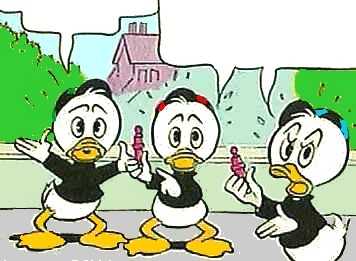 Animal-call whistles U$19 - 1957 |
|
| THE COMIC BOOK EDITIONS | ||||||||||
| A lot of Firsts can be extracted from Barks' comic books. Here are some examples of the more interesting and relevant ones. (You can use this list to settle matters of dispute that may pop up during friendly discussions): | ||||||||||
|
||||||||||
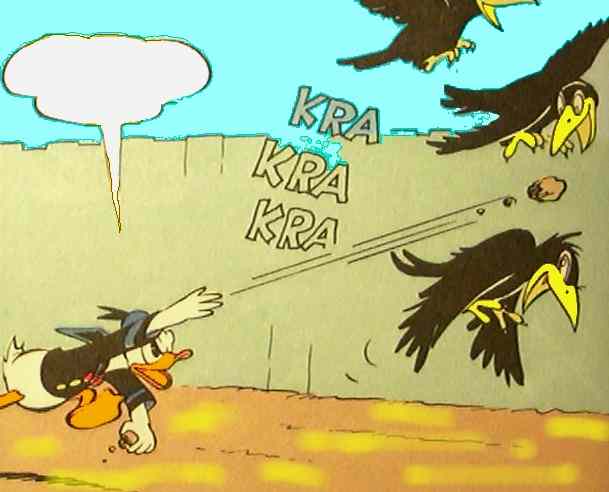 WDCS031 - 1943 FIRST TEN-PAGER |
FC0009 - 1942 FIRST DRAWN STORY |
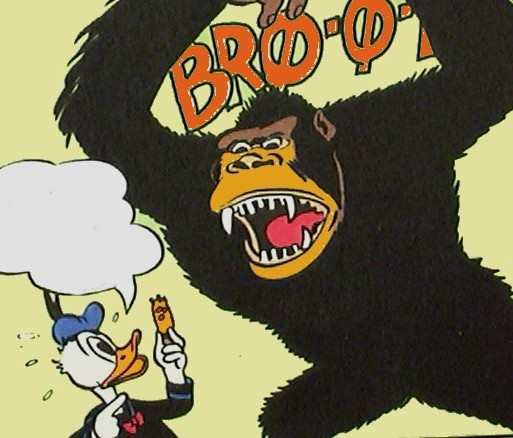 WDCS032 - 1943 FIRST WRITTEN/DRAWN STORY |
||||||||
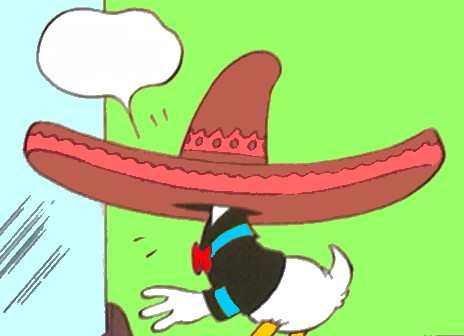 FC0147 - 1947 FIRST ONE-PAGER |
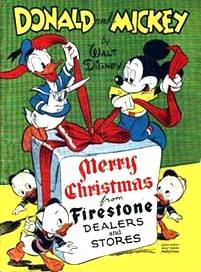 FG1945 - 1945 FIRST GIVEAWAY |
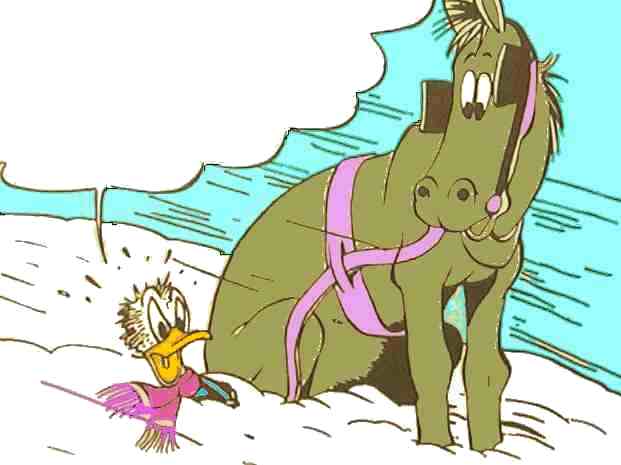 FG1945 - 1945 FIRST CHRISTMAS STORY |
||||||||
WDCS33 - 1943 FIRST CENSORING Barks was told to reduce the breast size of the female character who was seen in a swim suit |
 FC0291 - 1950 FIRST STORY WITH HUMANS Barks dreamed of inventing a new comic with real humans, and he 'practiced' in some of his stories |
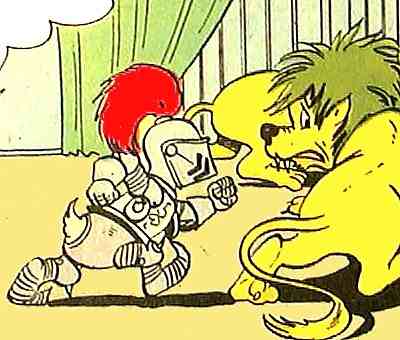 WDCS198 - 1957 FIRST IDEA FROM PEGGY Barks' first daughter, Peggy, contributed several ideas and plots to her father's stories |
||||||||
WDCS046 - 1944 FIRST SHOWING OF (A STILL NAMELESS) DUCKBURG |
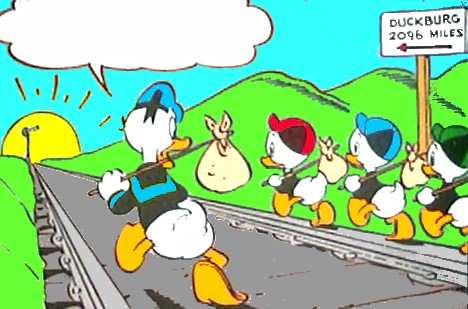 WDCS049 - 1944 FIRST MENTIONING OF DUCKBURG'S NAME |
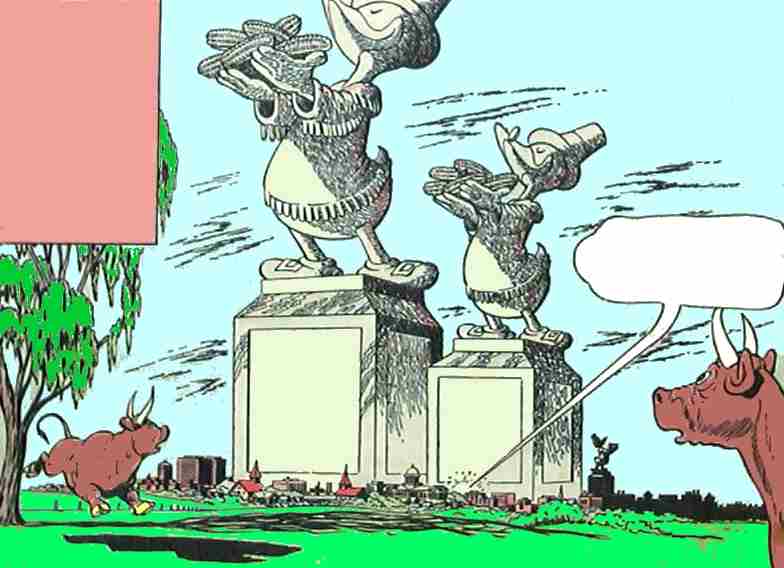 WDCS138 - 1952 FIRST MENTIONING OF FOUNDER CORNELIUS COOT |
||||||||
| THE TECHNICAL INNOVATIONS | ||||||
| Barks was constantly experimenting with the page layouts in his stories, and in several instances he came up with brand-new ideas that would later be used by other artists. Here is a small collection of different types. (Again, it should be noted that the drawings do not necessarily show the first appearances of the layouts.) | ||||||
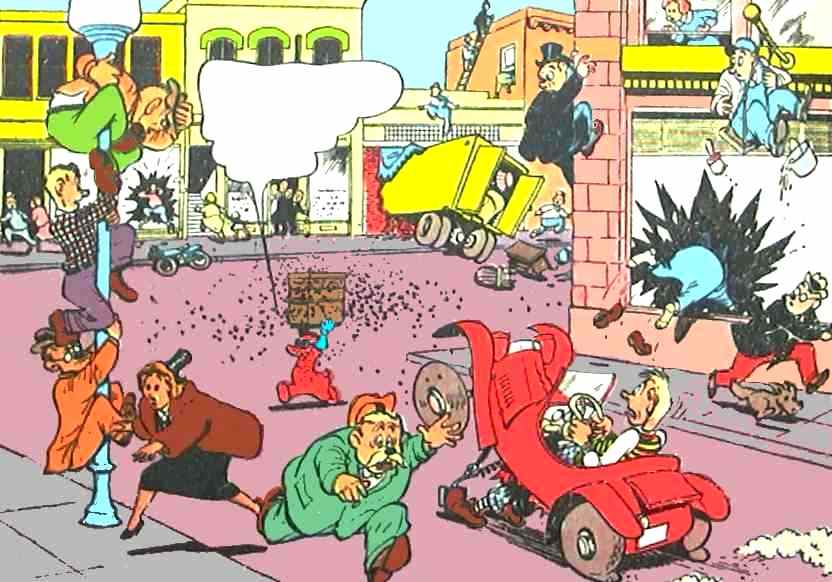 DD26 - 1952 FIRST SPLASH PANEL Barks was very proud of his numerous big splash panels which took him a long time to compose. At the time most artists did not bother to produce that kind of time consuming panels - but Barks did! |
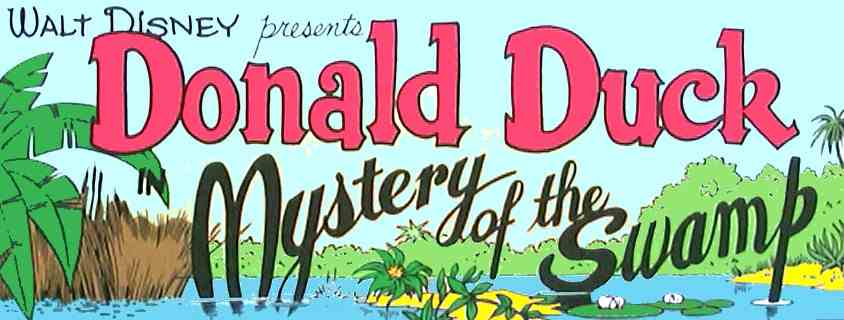 FC0062 FROZEN GOLD - 1945 FIRST USE OF POETIC OPENING PANELS In some of his first FC-stories Barks experimented with an opening panel that would set the tone for the oncoming story. These panels are pure masterpieces - poetic paintings. Unfortunately Barks eventually stopped doing these panels. |
|||||
WDCS034 - 1943 FIRST USE OF IDENTICAL HEADINGS ABOVE EACH PAGE On top of every page in the first few WDCS's Barks drew a strip which showed the reader some of the content. These 'overheads' are especially interesting because they represent the very first inking Garé did for her husband's comics. |
||||||
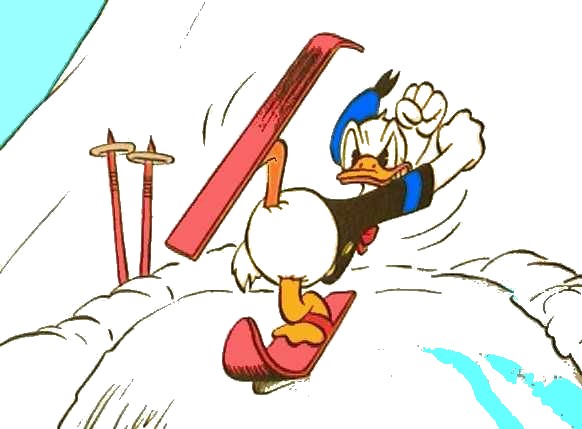 WDCS031 - 1943 FIRST STORY WITH 3 ROWS PER PAGE Most of the time when Barks drew his comic pages he used 4 rows of panels on each page. However, he occasionally used 3 and - less frequently - 5 rows. |
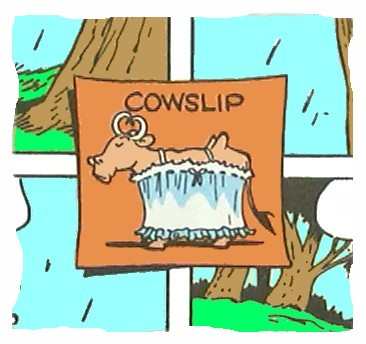 FC0199 - 1948 FIRST USE OF SMALL VIGNETTES Barks enjoyed placing small vignettes between his panels just for the fun of it. They had no bearings on the story but they added a great deal of atmosphere. |
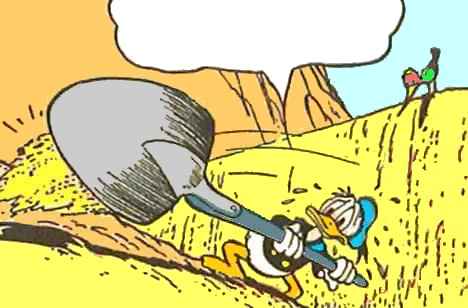 WDCS103 - 1949 FIRST USE OF PERSPECTIVE DRAWING Barks experimented with forced perspective in order to give his drawings a 3D-effect. Not used that often but certainly a new thing back then. |
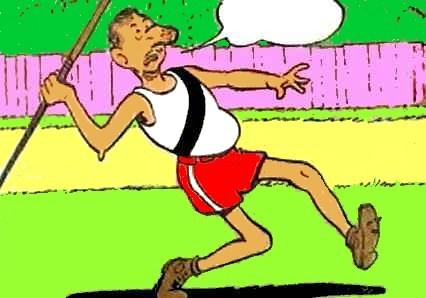 FC0199 - 1948 FIRST SELF-CARICATURE At some point in his professional career, any artist is tempted to put in a caricature of himself in his work and Barks was no exception. They served as injokes, because nobody knew him at the time! |
|||
|
||||||
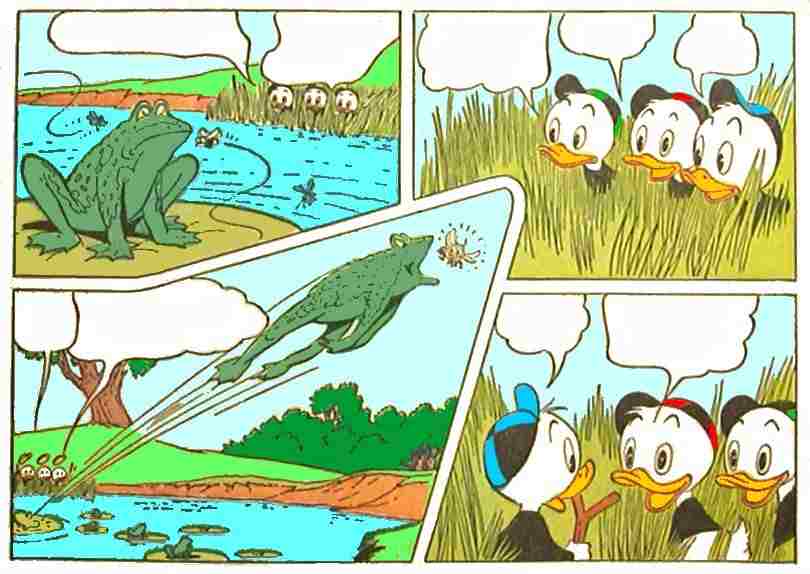 WDCS081 - 1947 FIRST USE OF ELASTIC PANELS In those days, artists did not often experiment with the fixed formats of the panels - but Barks did. Not for the sake of doing something spectacular but simply because the broken frames served a purpose; they were a simple and logical way of showing an extended drawing. Today no one would lift an eyebrow over Barks' progressive art but it was a novelty at the time. |
VP1 - 1950 FIRST USE OF IRREGULAR PANELS Barks continued experimenting with his panel layouts. He broke up the standard square panels into odd-shaped and fanciful ones. One might suspect he did this just for kicks, but a closer examination reveals that the layout of every page is in fact different but always with the clear purpose of showing the action as best as possible. At times the page panels look like pieces for a jigsaw puzzle but they are eminently functional. |
|||||
| http://www.cbarks.dk/THEFIRSTS.htm | Date 2004-04-08 |